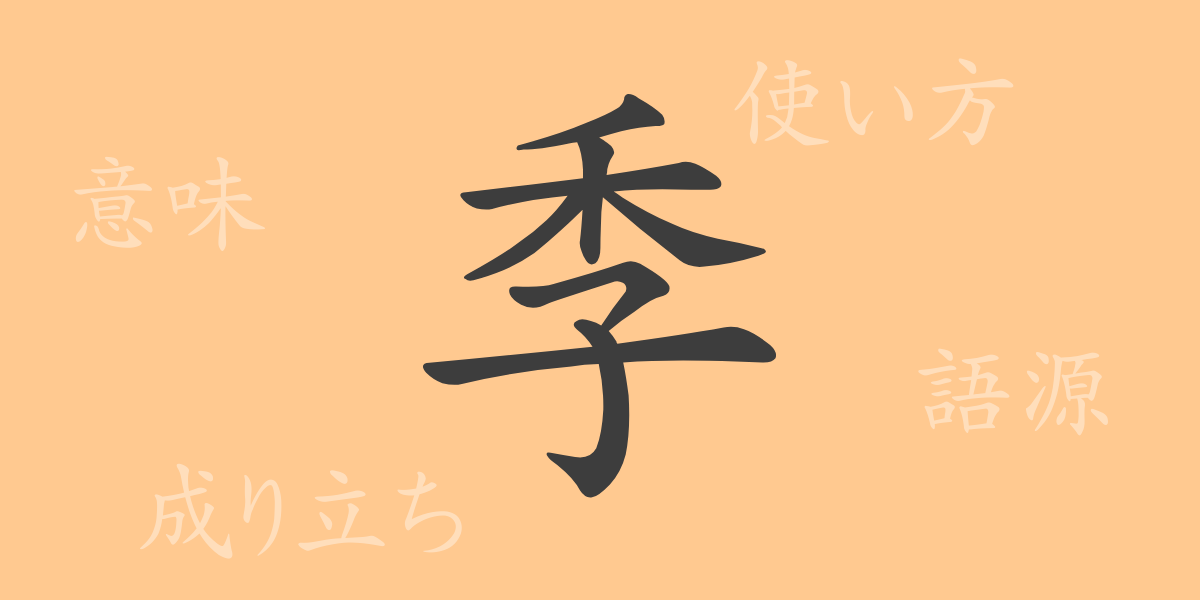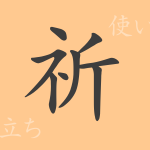Japan’s rich culture of writing is filled with the meaning and beauty woven by its diverse kanji characters. Among them, the kanji “季” (き, ki) is indispensable for expressing the emotions and landscapes of the Japanese people throughout the four seasons. In this article, we delve into the allure of “季” (き, ki), exploring its origins, meanings, and uses. We will also touch on idioms and phrases commonly used in daily life, investigating the rich worldview encapsulated by this single character.
The Origin (Etymology) of 季 (き, ki)
The character “季” (き, ki) was born in ancient China as a word to denote a period divided into four parts of the year. Tracing its etymology, it comes from the meaning of the “season” when “禾” (のぎ, nogi) matures, that is, when crops are harvested. This kanji, symbolizing the flow of time and the cycle of nature, has been closely related to people’s lives and cherished since ancient times.
The Meaning and Usage of 季 (き, ki)
“季” (き, ki) is primarily used as a word meaning “season.” This character is essential for expressing the changes of the four seasons and is frequently used in both literature and everyday conversations. It is also used to mean “time” or “period,” playing an active role in expressions that specify a particular time.
Readings, Number of Strokes, and Radical of 季 (き, ki)
“季” (き, ki) has multiple readings in Japanese, and they are used differently depending on the context.
- Readings: The onyomi (Chinese reading) is “キ” (き, ki), and the kunyomi (Japanese reading) is “とき” (toki).
- Number of Strokes: A total of 8 strokes.
- Radical: 子部 (こへん, kohen) – the “child” radical.
Idioms, Phrases, and Proverbs Using 季 (き, ki) and Their Meanings
There are numerous idioms, phrases, and proverbs in Japanese that include the character “季” (き, ki). These expressions often take advantage of the meanings of “季” (き, ki) related to seasons and periods.
- 四季折々 (しきおりおり, shiki oriori): Expressing the unique characteristics of each of the four seasons throughout the year.
- 季節感 (きせつかん, kisetsukan): The sense or atmosphere unique to a particular season.
- 季語 (きご, kigo): A word used in haiku poetry to indicate the season.
- 季節外れ (きせつはずれ, kisetsuhazure): Something that is not appropriate for the current season.
- 次第に季節は移ろい (しだいにきせつはうつろい, shidai ni kisetsu wa utsuroi): Describing how the natural scenery changes over time as the seasons progress.
Conclusion on 季 (き, ki)
The kanji “季” (き, ki) is deeply connected to the Japanese heart that feels the four seasons. Used in idioms and phrases that evoke the changing seasons, it brings rich expression to our language. From literary works to everyday conversations, the multiple layers of meaning held by this single character tell the story of the depth of the Japanese language. Through “季” (き, ki), we hope to continue cherishing the beauty of the seasons and the passage of time, as well as the richness of words.

























